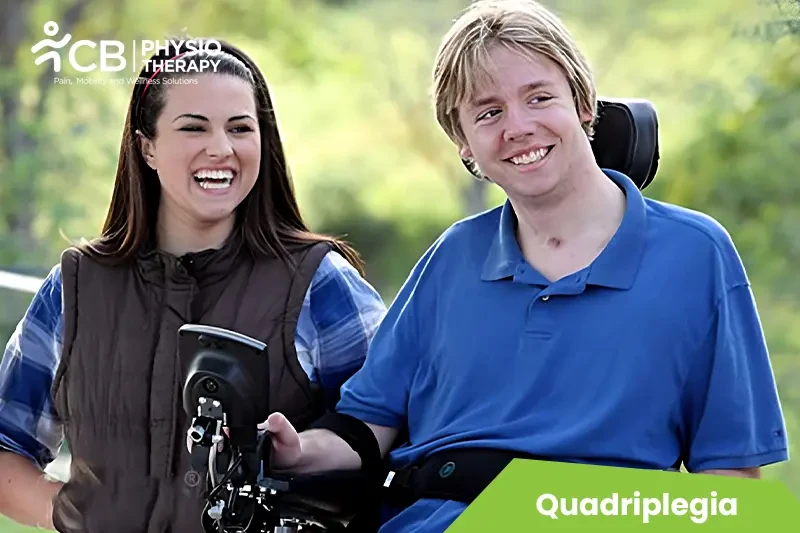
Quadriplegia or Tetraplegia is a condition of paralysis that affects all the limbs and body from the neck to the down. The most common cause of quadriplegia is an injury to the spinal cord at the level of the neck. Quadriplegia is sometimes treatable but in most cases injury results in permanent paralysis.
Quadriplegia is when the person can’t deliberately control or move his muscles and it can affect a person from the neck to down. Depending on how and why it happens, it can affect the ability to move parts of the body, as well as some of the body’s automatic processes that keep the person alive.
Types of Quadriplegia:
Incomplete Quadriplegia: In this type, the quadriplegia blocks some signals from getting through, and thus a person might still have some ability to move, feel sensations, or control automatic body processes like bowel and bladder function.
Complete Quadriplegia: In this type, the quadriplegia blocks all signals from getting through, i.e a person loses muscle control, and the ability to feel sensations, and their brain can’t manage any automatic processes that rely on the signals sent by the brain to work.
Two ways that paralyzed muscles act in Quadriplegia:
Flaccid Quadriplegia:
Flaccid quadriplegia means that muscles don’t work at all and remain flaccid.
Spastic Quadriplegia:
Spastic quadriplegia results in muscles that don’t work by themselves and contract uncontrollably.
Effect of the location of a problem on Quadriplegia?
The spine has several sections. The cervical spine or C-spine is the section in the neck. There are seven vertebrae interlocking bone segments, which make up the C-spine. The C-spine also includes eight spinal nerves, which run in-between vertebrae and lead to different areas of the body.
The effects of a problem with the spinal cord injury can vary widely depending on where exactly it happens. For example, the 6th cervical spinal nerve is known as C6. Quadriplegia can occur when there’s an incomplete or complete spinal cord injury anywhere between C1 and C8. The higher the injury, the more dangerous the effects are. The effects, depending on location:
Select your City to find & connect with our experts regarding Physiotherapy for Quadriplegia